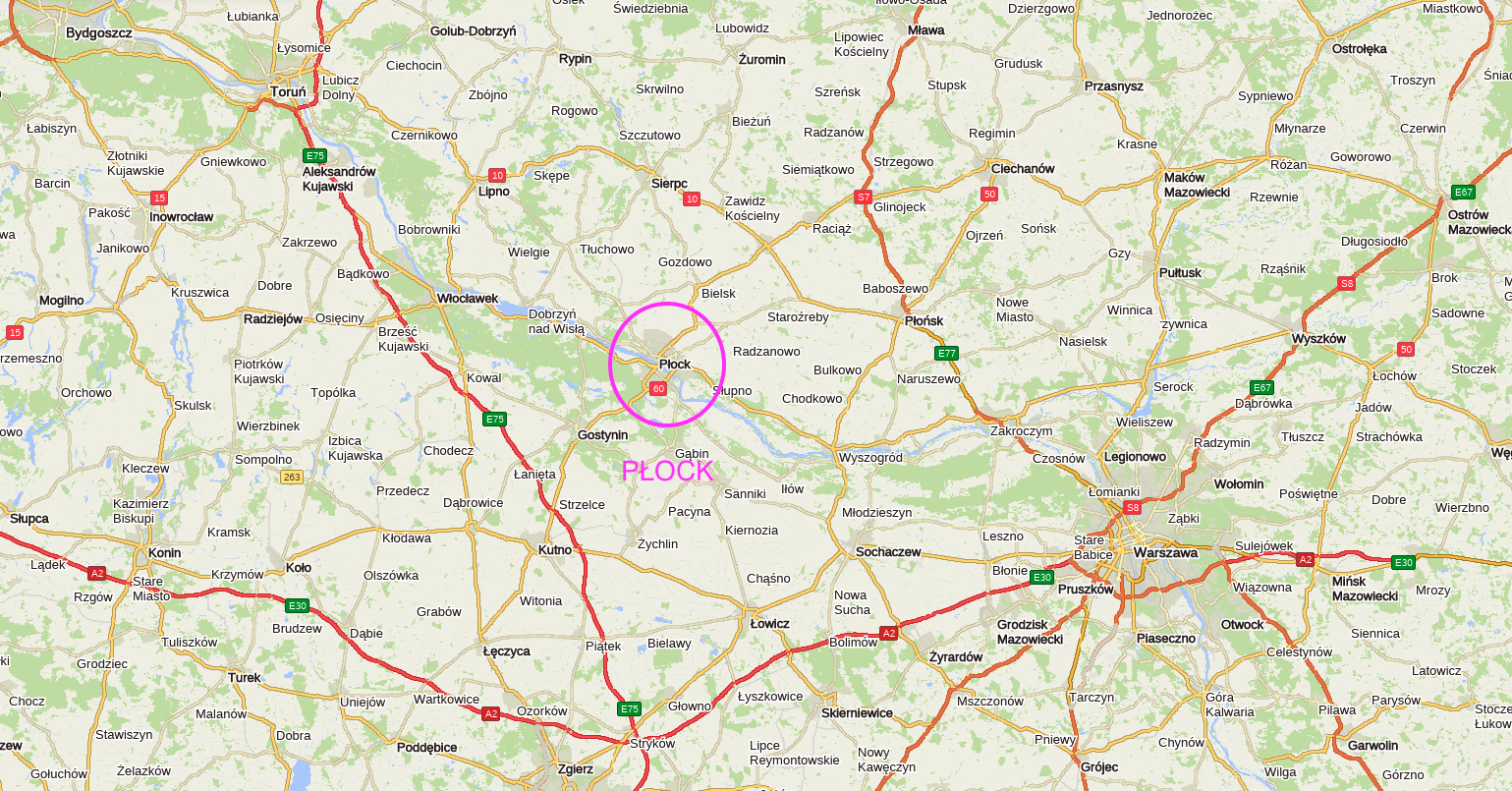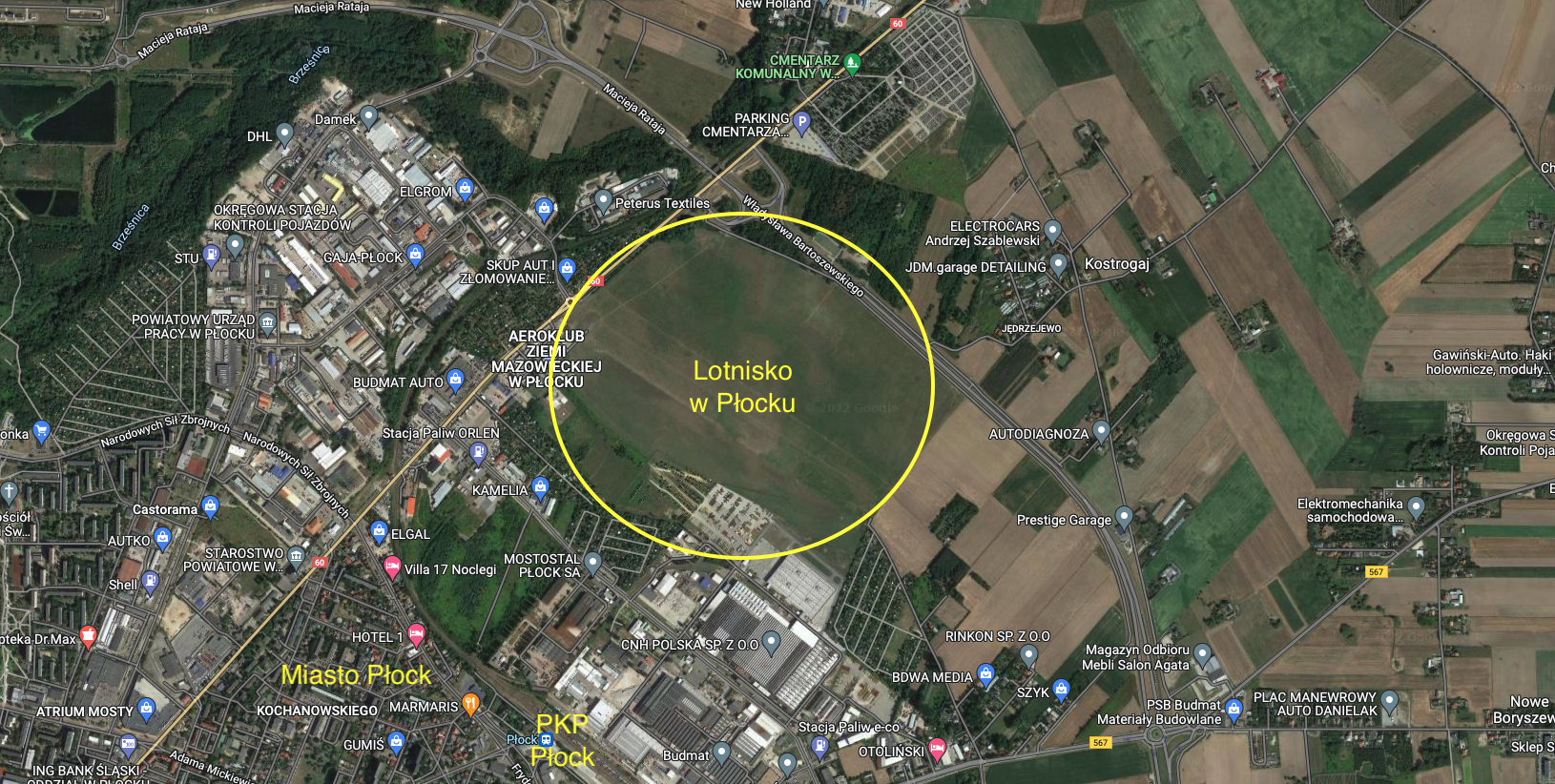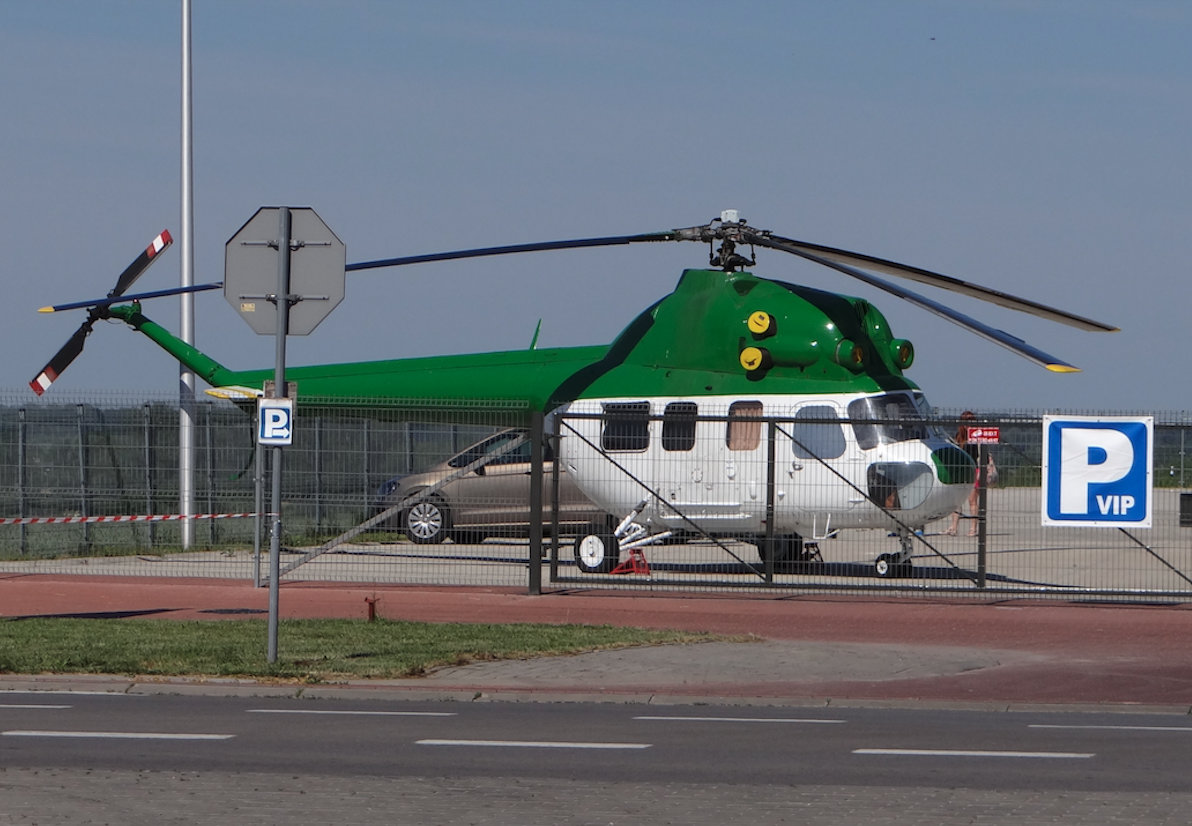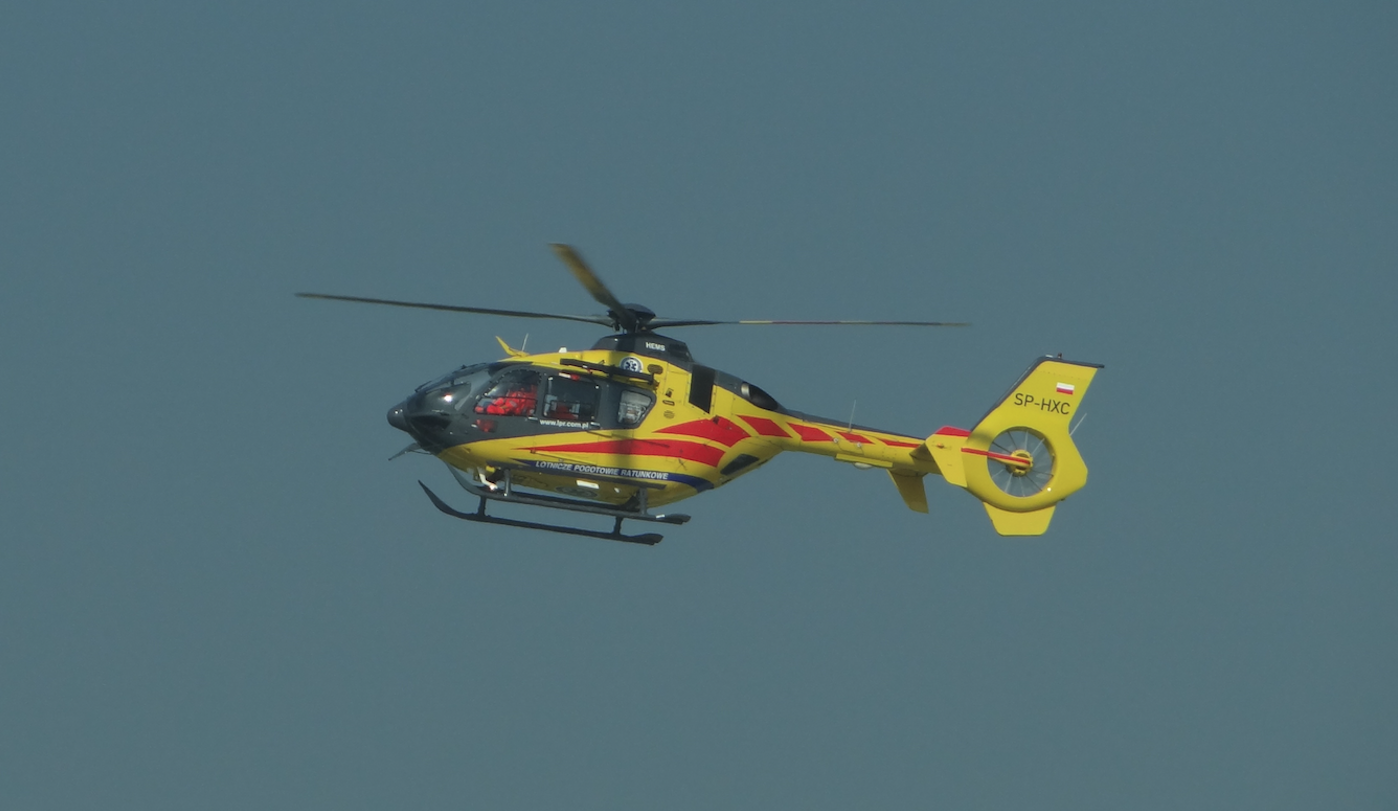Płock 2022-12-06
Płock airport.
Płock is a Polish city that has a 1,000-year history and was also the capital of Poland. Płock is a large city in central Poland, which currently has poviat rights. The city is located in the Dobrzyń Lake District, in the Płock Valley, on the Vistula River, in the Mazowieckie Voivodeship. A resident of Płock was the fighter pilot Jan Zumbach, who was the commander of the legendary 303 Squadron. In 2013, Płock had 123,000 inhabitants, and in 2020 118,628 people. The area of the city is 88.04 km2. Altitude above sea level from 58 m to 105 m.
History of Płock.
The beginnings of the city of Płock date back to the 9th century. The people were encouraged to settle in this place by the convenient areas for living and defence. The most important was the Tumskie Hill, about 50 m high from the Vistula water table. But the spring floods of the Vistula often damaged the escarpment of the hill, which resulted in landslides. The area of today’s Płock together with Mazovia became part of the Piast state. A ducal fortified town was built on Tumskie Hill. A trading and fishing settlement was established next to the stronghold.
For a while, the Piasts lost control over Płock, but already in 1047, the stronghold was re-incorporated into Poland by Prince Casimir II the Restorer. During the times of King Bolesław II the Bold (1058–1079), the Benedictine Fathers were brought to the town, and from 1075, there was a bishopric here. In the period 1130 – 1144 a Romanesque cathedral was erected in Płock. During the reign of princes Władysław II Herman and his son Bolesław III Krzywousty (1079 – 1138), Płock served as the main center of power in Poland. From 1138, Płock became the capital of the Mazovian dukes, who ruled all of Mazovia. After the division of districts, Płock was the capital of the district of Bolesław IV Kędzierzawy. In 1237, Płock received Polish city rights, granted by Duke Konrad I Mazowiecki. The stronghold and the castle were destroyed several times during the invasions of the Ruthenians, Prussians and Lithuanians, but they were always rebuilt. During the times of King Casimir III the Great, Płock was expanded. In 1435, Prince Władysław I repeated the right of location of the town under the Chełm law. In the fifteenth century, a water supply system was established in Płock and a hospital was founded. A school has been operating in Płock since 1180, which is currently called "Liceum Ogólnokształcące im. Marshal Stanisław Małachowski", popularly known in Płock as Małachowianka. It is the oldest school in Poland and in Europe that continuously exists in the same place. Płock developed trade, crafts, boatbuilding, cloth, brewing and distilling.
Płock was not spared by fires, epidemics, cataclysms and wars. In 1532, a landslide on the Vistula escarpment contributed to the destruction of part of the castle. In 1603, as a result of the plague, 2,000 inhabitants of the city died. In 1616, 70% of the buildings burned down. Płock was destroyed by the Swedes twice: in 1657 and then in 1705. During the second partition of Poland in 1793, Płock was occupied by the Prussian plague. Under the rule of the Prussians, Płock became the capital of New East Prussia. Since then, the influx of Germanic people began, for whom the so-called New Town was built.
In the period 1820 – 1830, a number of buildings in the neoclassical style were built, including the town hall. In 1846, steam navigation on the Vistula was launched, and the river shipyard was expanded. Płock became a trading center again, where grain, wood and overseas goods were traded. A number of food, metal and agricultural factories were established.
The population of Płock heroically defended itself during the Polish-Bolshevik war in August 1920. On April 10, 1921, next to Lviv, Płock received the title of City-Hero and the Cross of Valor for heroic defense from Marshal Józef Piłsudski.
In October 1939, together with northern Mazovia, the Germans incorporated Płock into the Reich, under the name of Schröttersburg, to the Ciechanów district of East Prussia.
In 1945, Płock returned to Poland. In 1945, the Płockie Przedsiębiorstwo Robót Mostowych was established, which, for example, built the Łazienkowski bridge. In 1959, the Refinery and Petrochemia was established. The Harvesting Machines Factory was developed, producing "Bizon" combine harvesters, and the factory existed since 1870. The shipyard was expanded into the largest plant in Poland.
Saint John Paul II and Sister Faustina in Płock.
In Płock, the Sanctuary of Divine Mercy is the destination of religious pilgrimages. On February 22, 1931, Sister St. Faustyna Kowalska had her first revelation of the image of Merciful Jesus. On the 100th anniversary of her birth, the Museum of St. Faustina.
On June 7-8, 1991, Pope St. John Paul II the Great visited Płock. It was the fourth pilgrimage of the Holy Father to his homeland, the first after the political change. In addition to meetings with the faithful on Celebry Square and in the Płock cathedral. He was the first pope to meet prisoners in the prison in Płock. In the evening of June 7, 1991, young people met with the Holy Father. The Pope spoke to them from the window of the bishop’s house. In the same window, the next morning, the Pope appeared to say goodbye to the inhabitants, after which he left for Warsaw.
Refinery and Petrochemia Płock.
As a result of the Second World War, Poland fell under the influence of the CCCP. State borders have been changed. For nearly 50 years, all decisions concerning Poland were made in Moscow. The CCCP wanted to make dependent countries dependent in every respect: political, military and economic. Russian language became compulsory in schools.
Economic dependence consisted, for example, in buying raw materials exclusively from the CCCP. The decision to build a pipeline system for the transmission of oil, code-named "Friendship", was made on December 18, 1958, at the 10th session of Comecon in Prague. Originally, it was to be a system for transporting crude oil from Moscow to Comecon countries in Central Europe: Hungary, Czechoslovakia, Poland and East Germany. The "Friendship" pipeline crossed Poland from east to west, with a branch to Gdańsk. In Poland, in December 1959, by order of the Minister of Chemical Industry, the state-owned enterprise Mazowieckie Zakłady Rafinercyjne i Petrochemiczne was established. The order entered into force on December 1, 1959. Locating the factory in Płock was logical. The oil was to be supplied by a pipeline from the Moscow state. The Vistula River provided sufficient water for technological processes. The existing railway line guaranteed efficient transport of products.
The refinery plant in Płock was built in the period 1960 – 1965. In the following years, the petrochemical plant was expanded and new technologies were introduced, including Japanese ones. The plant uses 15,000 m3 of water per hour, which is twice as much as a city with a population of 1 million. In 2002, another modernization of the plant was started, and its contractor was ABB Lummus.
On September 7, 2015, the cornerstone was laid for the construction of the country’s largest combined heat and power plant, which is to be implemented jointly by PKN Orlen and Siemens. The new plant is to fully cover PKN Orlen’s demand for electricity and process steam, and the fuel used is natural gas.
Currently (2022) the plant in Płock is called PKN ORLEN in Płock. The factory is one of the largest and most modern in Central and Eastern Europe.
Plock airport.
Geographic coordinates: 52.562N 19.720E. Elevation 101 m above sea level. Type of airport – civil, sports. IATA-QPC code. ICAO code – EPPL. Runways – direction 12/30, turf – 680 x 300 m. Radio – 122.800 MHz. The Aeroclub of the Mazovian Land is the host of the airport in Płock. The airport is called Kostrogaj. The airport is located in the northern part of the city, at street Bielska.
The airport was established in 1928 as a military airport. The Military Aviation School in Dęblin used the airport. During the Second World War, the airport was used first by the Germans, and then by the Soviets. After World War II, the airport was not used by the Polish Army, but it was a backup landing site. In the period 1952 – 1957, the airport was used for training parachute jumpers, organized by the Warsaw Aeroclub. The establishment of large factories in Polotsk turned the airport into a place of entertainment. The plants themselves often used the services of the Aeroclub. Many employees joined the Aeroclub. The modeling section is very strong. There is also a hang gliding group. After the economic transformation in 1989, more and more private aircraft are based at the airport. New gliders and planes appear.
At the time when the "Bizon" combine harvesters reigned supreme in Polish fields, an aviation technical team operated at the airport to remove failures of combine harvesters working in the fields. The team used PZL Mi-2 helicopters. PZL Mi-2 helicopters were also used by the Refinery and Petrochemia team to monitor the "Friendship" pipeline.
However, the biggest challenge facing the Aeroclub at present (2022) is the paved runway and modern airport infrastructure. The existing double hangar at the airport was built in 1963. However, one should know that the expansion of the Płock airport, similarly to the Toruń airport, is opposed by the European Union, a kind of European kolkhoz.
In 2008, the air ambulance station – HEMS was established at the airport. Since December 2007, a helicopter has been based here permanently. Initially, there was the PZL Mi-2 Plus, Ratownik 18 Air Rescue helicopter. Then the Eurocopter EC-135 helicopter was introduced. The official opening of the station took place in December 2008. The real estate of the HEMS Branch in Płock includes: a plot of land, a helicopter hangar with social and office facilities with a usable area of 400 m2, an airstrip and a petrol station. Currently (2022) helicopters are on duty during the day. Annually, the helicopter is sent to action about 360 times. In 2014, in Płock at ul. Medical, a sanitary landing pad for helicopters was commissioned.
Written by Karol Placha Hetman




